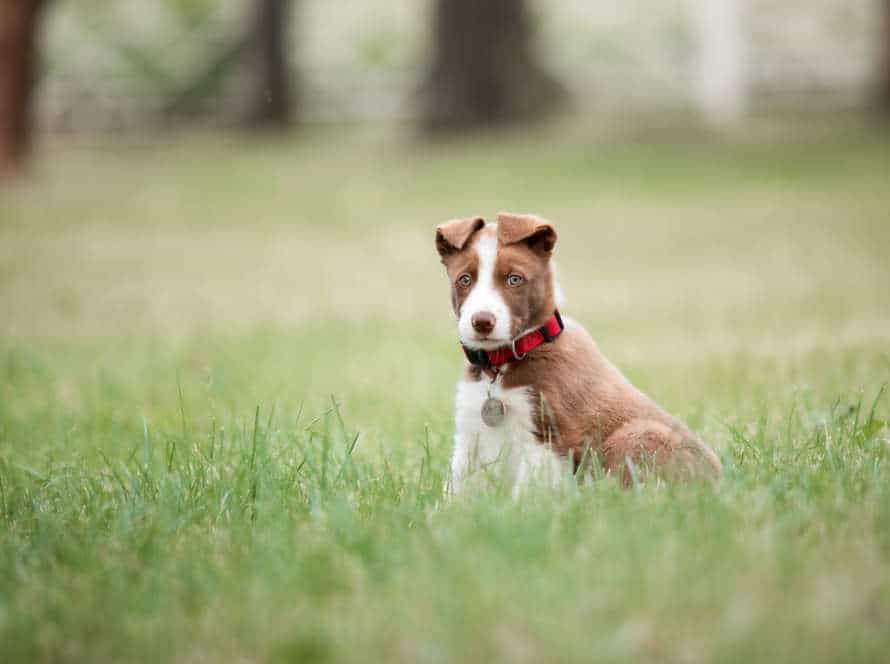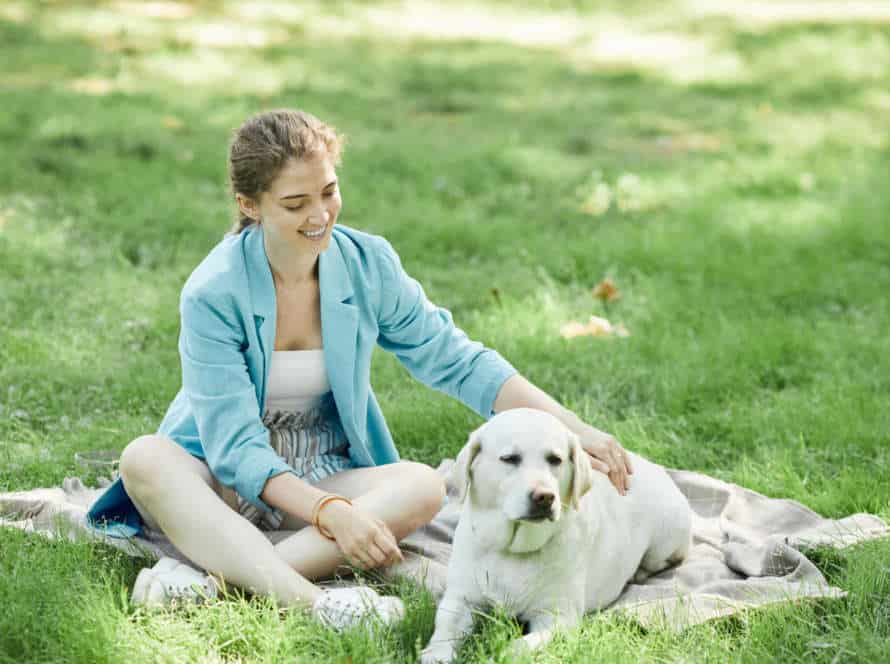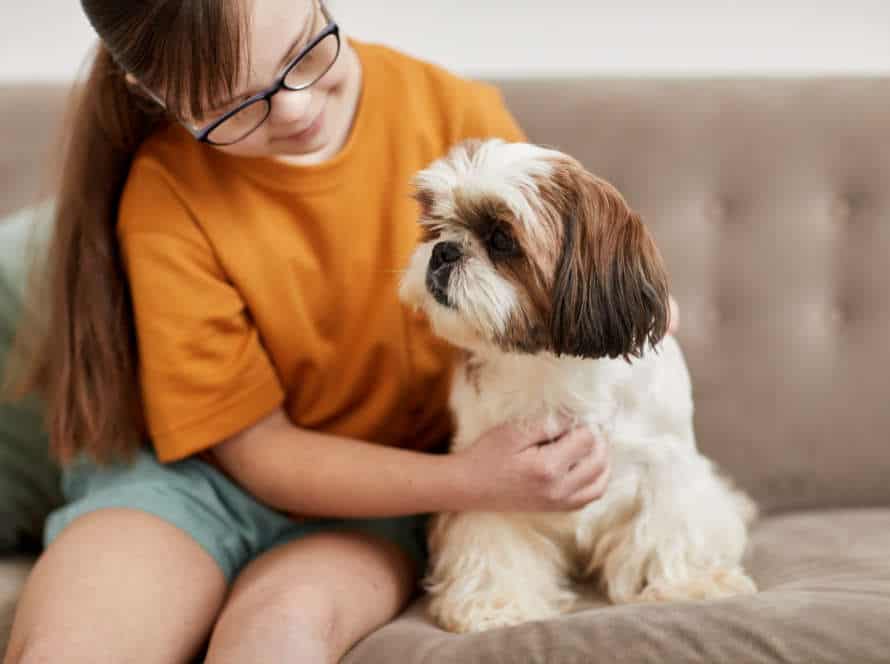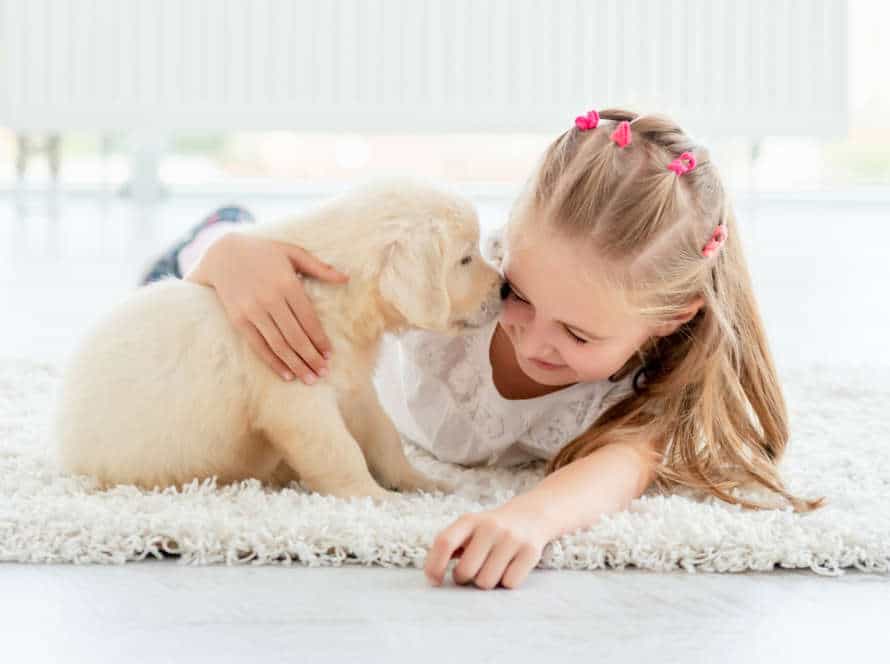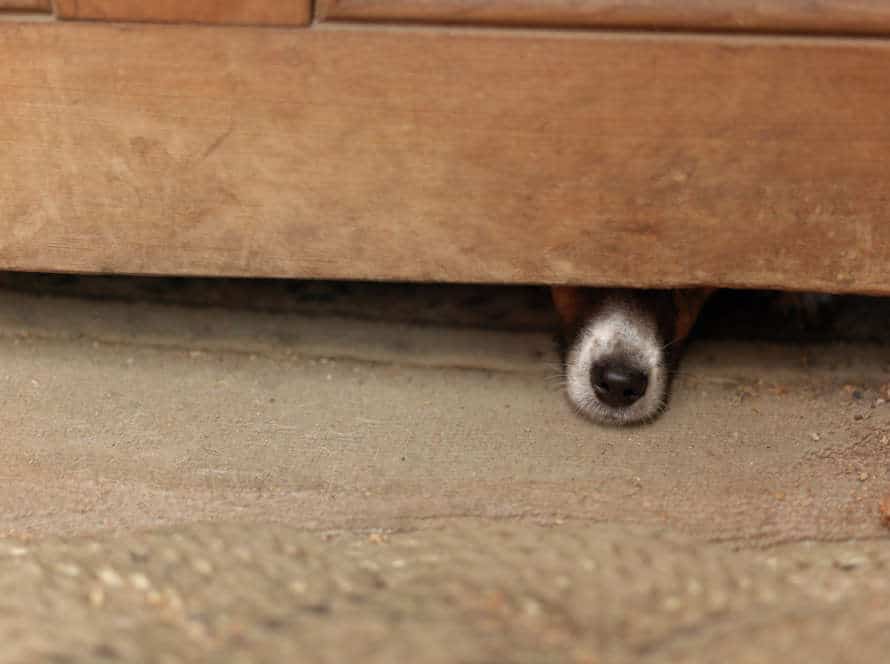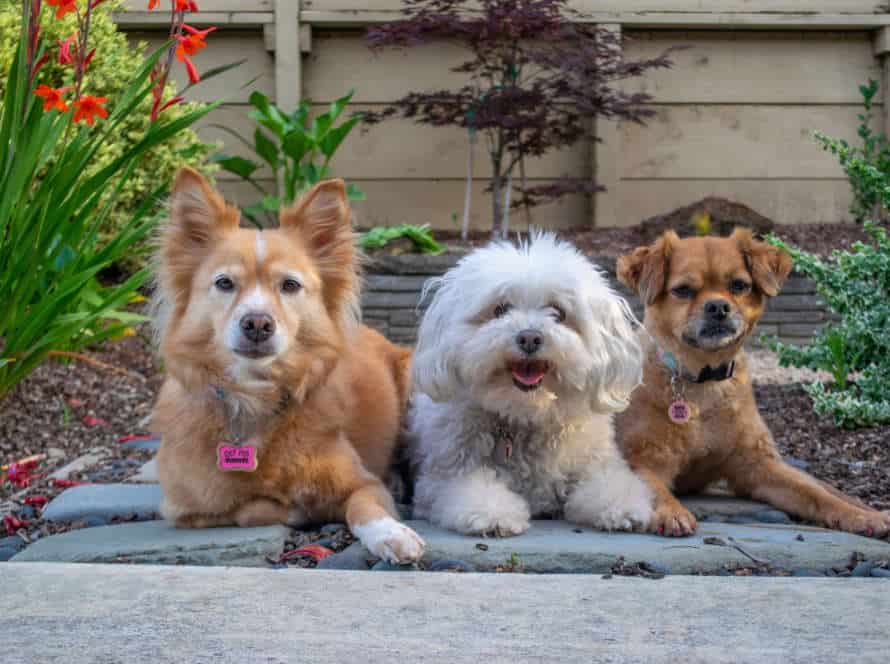Recognizing and Addressing Subtle Signs of Resource Guarding
Resource guarding in dogs can be hard to spot. It’s essential to recognize and tackle these signs to stop the behavior from getting worse. Signs of resource guarding include:
- Being rigid when someone comes near while eating or playing with a toy.
- Not looking at somebody or growling if they get too close to something valuable.
- Moving away or putting items away when people are nearby.
- Trying to hide or cover items when people are near.
If you observe your dog exhibiting any of these signals, you should take action before it gets worse. Get help from a professional trainer or behavior specialist who can direct you on how to safely and efficiently address resource guarding behavior in your pup.
Understanding Resource Guarding Behavior in Dogs
Resource guarding is when a pup is protective of something it owns. It could be a person, space, or an item. When a person gets close to the item, the dog will act defensively. We must be quick to spot these signs.
In this piece, we’ll cover common behaviors linked to resource guarding. Plus, how to recognize it in your canine and deal with it in a safe and successful way.
Definition and causes of resource guarding behavior
Resource guarding is a possessive and aggressive behavior in dogs. It’s when they guard their valued possessions, like toys or food, from other dogs or humans. This behavior can be caused by genetics, lack of socialization, past experiences of deprivation, or fear of not having enough resources. Dogs may guard their resources if they feel insecure.
It’s important for owners to recognize subtle signs of resource guarding, such as growling or tense body posture. Positive reinforcement and desensitization can help address this behavior. With the right training and management, resource guarding behavior can be minimized. This enables dogs to feel safe and secure while sharing their resources.
Types of resources that dogs may guard
Dogs often guard various resources. It’s important to recognize this behavior to avoid any dangerous situations. Here’s a list of what they usually guard:
- Food & Water: Dogs may feel threatened while eating, so they protect their food to keep away competitors.
- Toys: Some dogs are possessive and act aggressively if someone comes near their toys.
- Space: Dogs guard their sleeping places, crates, and personal areas.
- People: In some cases, they may be aggressive when someone approaches their favorite person, showing they’re protecting them.
- Other Animals: Dogs may guard other pets to show their dominance and mark their territory.
It’s important to recognize and address any signs of resource guarding exhibited by your dog. A Pro Tip: Positive reinforcement training can help stop resource guarding behavior since it uses reward-based methods.
Common subtle signs of resource guarding
Resource guarding in dogs is common. Here are signs to recognize it:
- Lip Licking: Anxiety and discomfort.
- Freezing:They become rigid to protect.
- Growling: Threatened, scared, or uncomfortable.
- Stiff Body Language: Tense muscles and a rigid posture.
- Avoidance Behavior: Avoiding situations where resources may be taken away.
Recognizing these signs helps address resource guarding and prevent aggression.
Factors that Contribute to Resource Guarding Behavior
Animals such as dogs, cats, and other pets can display resource guarding behavior. This is when they show aggression to protect something they own, like food, toys, or furniture. To stop and prevent this, it’s vital to comprehend the causes of this behavior.
Lack of socialization
Lack of socialization is one cause of resource guarding in dogs. Puppies not exposed to different people, animals and settings are more likely to show this behavior.
Signs of resource guarding include putting head or paw over toys, food or other things they like, growling or being rigid when approached, and protecting resources.
Addressing this requires giving socialization with positive reinforcement training. Exposure to various people, animals and settings, plus rewards during interactions with other dogs and humans, are essential.
For more serious cases, extra training, medicine or professional help is needed.
Pro Tip: Socialization and training in the early stages, positive reinforcement and spotting resource guarding early, will help your pup have a calmer life with you.
Poor training
Poor training can lead to resource guarding in dogs. If they haven’t been taught to share food, toys, or space, they can become possessive and act aggressively if someone tries to take them away. This must be stopped straight away.
Signs of resource guarding you should look out for include:
- Growling or baring teeth when someone nears their resources
- Muscles tensing and body stiffening
- Moving away or hiding resources when someone approaches
If you spot any of these signs in your dog, take action right away. Seek out a professional dog trainer to help teach appropriate behavior around resources. Make safety a priority for yourself and others.
Genetics and past experiences
Resource guarding is a problem for many pet owners. Genetics and past experiences have a big impact on pet resource guarding.
Genetics: Some breeds are more likely to guard resources. Breeds like German Shepherds, Rottweilers, and Chihuahuas are known to be more aggressive with resources than others. It’s important to know your pet’s breed characteristics and do appropriate training and socialization.
Past Experiences: Pets that have had bad experiences with resources, like not getting enough or getting things stolen, are more likely to guard resources. It’s key to figure out why the pet guards resources and address bad experiences. Training, socializing, and positive reinforcement can help reduce resource guarding.
Recognizing Subtle Signs of Resource Guarding
Animals may show resource guarding behavior when they attempt to protect something they think is valuable – food, toys, or territory. It can be tricky to spot the subtle signs of resource guarding. It’s important to be aware of them and address them correctly. Here’s how to identify the subtle signs and how to tackle them:
Body language signals of resource guarding
Resource guarding is a behavior shown by pets where they protect their favorite objects, like toys or food.
To avoid aggressive situations, look for body language signals.
- Stiff posture? That’s a sign the pet doesn’t want to let go of their object.
- No eye contact? That means the pet doesn’t want to share and will do anything to keep control.
- Growling or snapping? These are severe signs that the pet feels scared or threatened and might get aggressive.
- Lifting a paw? It shows the pet is anxious and fearful and might react defensively.
If you see these subtle signs, try removing the resource or going to the pet calmly. This way, they won’t feel threatened and the risk of aggression is minimized.
Common triggers of resource guarding behavior
Resource guarding is when dogs aggressively protect their things, like food, toys, or other valuable items. It’s important to catch the small signs before it gets worse.
Here are some reasons it can happen:
- Fear: When they think their stuff might get taken away, they may act aggressive to keep it, especially if they had a bad experience before.
- Insecurity: When in an unfamiliar place or feeling unsafe, they may guard possessions to feel better.
- Hunger: A hungry dog may guard food or anything related to food.
- Environment: Living in an overcrowded or disorganized space can make them start guarding stuff.
Identifying small signs, like growling, snarling, or being stiff, can help prevent aggression. Training and positive reinforcement can help too.
Pro Tip: Ask a professional dog trainer or behaviorist to deal with any worrisome behavior.
Importance of early intervention
Early intervention is essential to identifying and tackling slight signs of resource guarding in pets. This helps to stop the problem from getting worse. Here are a few warning signs to watch out for:
- Growling or snapping when eating or playing with a toy, and when approached.
- Refusing to move or give up an item when asked.
- Hiding food, toys, or other objects in specific places or under furniture.
- Excessive licking or grooming of items.
- Protecting a particular area or spot in the house.
If you notice any of these signs, intervene early to stop the behavior from becoming more serious. This could include positive reinforcement training, or consulting a vet or animal behaviorist. Tip: If resource guarding continues despite early intervention, get professional help as soon as possible to keep the behavior from getting worse.
Addressing Resource Guarding Behavior
Canines can display a behavior called resource guarding. This is when they become defensive and protective over things like food and toys. It’s important to watch for signs of this behavior. This article will tell you the signs and how to address it. Solutions exist to help tackle resource guarding in dogs.
Creating a positive association with the resource
Resource guarding is natural for canines– when they guard what they think is theirs. It can become aggressive if not managed properly. To stop this, create a positive connection with the resources being guarded.
Here’s how:
- Start small, with a low-value item like a toy.
- After playtime, offer your dog a yummy, high-value treat in trade for the toy.
- Do this multiple times, making the treats more valuable each time.
This will show your pup that you are a positive presence and they can trust you, even when taking away belongings. Pro tip: It’s key to train your dog and prevent any issues before they start– which can lead to aggression.
Teaching a “Drop it” or “Leave it” command
Train your pup the “Drop it” or “Leave it” command to stop and address their guarding behaviour. This could be growling, biting, or anger towards humans or other animals around their stuff.
Here’s how:
- Select a reward they love: maybe their favourite treat or a toy.
- Hold the reward in a closed hand, say “Leave it” or “Drop it“.
- Wait for your dog to look away or show disinterest. Instantly give them a treat from your other hand.
- Repeat, increasing the time, and replace the treat with the item they might guard.
- Remember to praise and reward each successful practice. Eventually, your pup will learn that the “Drop it” or “Leave it” command leads to a reward, which will prevent them from guarding behaviours.
Using desensitization and counter-conditioning techniques
Desensitization and counter-conditioning are the keys to addressing resource guarding in dogs. Expose the pup gradually to the cause of the behavior, starting at a distance where they are comfy. Counter-conditioning teaches the dog to link the object with something positive. Give high-value rewards when the object is near. This will replace the negative association with a good one. For safety, seek the help of a professional trainer or behaviorist. They can create an individual plan for you and your pup.
Preventative Strategies for Resource Guarding
Resource guarding is a behavior that is often not noticed. Knowing the signs is crucial. Taking preventive measures early is key. In this article, we’ll discover strategies to curtail resource guarding before it gets worse.
Teaching a “Trade” command
Teaching your pup the “trade” command is a great way to address resource guarding. Here’s how:
- Offer them one treat, then take it away.
- Show another treat and say “trade” while offering the new treat.
- Repeat a few times until they understand what “trade” means.
- Gradually build up to higher-value items.
Remember, resource guarding can be serious. If you’re worried, ask a professional for help.
Avoiding high-risk situations
Resource guarding in pets is dangerous. Recognize it early and take preventive steps. Here are some ways to do this:
- Obedience training. Teach commands like ‘drop it’, ‘leave it’ and ‘stay.’
- Expose your pet to different situations and people from young.
- Supervise mealtime. Create a peaceful atmosphere with no distractions.
- Keep a safe distance if your pet guards an item. Distract them with a treat or toy.
Prevent resource guarding to keep your pet safe.
Building trust and fostering a positive relationship with your dog.
Creating trust and a good connection with your pup is a must for keeping resource guarding behavior away and having a strong bond with your pet.
Here are some tips to make that happen:
- Positive Reinforcement: Use treats and compliments as rewards when your pup does something good.
- Consistency: Be steady with your dog’s training and regular routine. This helps them to understand expectations and have a sense of safety.
- Playtime: Have some fun with your pup – it’s great for bonding and building trust. Try games that teach sharing and working together, such as fetch or tug of war.
- Boundaries: Respect your dog’s personal space and don’t make them do something they don’t want to.
By using these tips, you’ll be on your way to having a great connection with your pup and stopping resource guarding.
Pro tip: Remember, developing and keeping a strong bond with your pet takes time, patience, and commitment.
Frequently Asked Questions
1. What is resource guarding?
Resource guarding is a behavior where a dog becomes aggressive or possessive over certain objects, toys, food or territory. This behavior can be dangerous if left unaddressed and can occur in dogs of all breeds and sizes.
2. What are the signs of resource guarding?
The signs of resource guarding can be subtle and vary from dog to dog. Common signs include growling, snarling, snapping, showing teeth, stiff body posture and guarding of objects or spaces. Other less obvious signs include staring, freezing, avoiding, or moving away from certain people or objects.
3. How can I address resource guarding?
The best way to address resource guarding is to consult with a professional dog behaviorist, who can evaluate your dog’s specific case and recommend appropriate training and management techniques. Management techniques may include preventing access to objects or spaces that trigger the guarding behavior, while training techniques may include teaching your dog to trade, or offer a high-value treat in exchange for the object they are guarding.
4. Can resource guarding be cured?
It is important to understand that resource guarding behavior cannot be cured, but it can be effectively managed with appropriate training and techniques. It is critical to remain vigilant and continue working with your dog to prevent any incidents of aggression from occurring in the future.
5. How long does it take to address resource guarding?
The duration of addressing resource guarding can vary depending on your dog’s temperament, age, and the severity of the behavior. With consistent training and management techniques, most dogs show noticeable improvement within a few weeks. However, it is crucial to continue working with your dog over an extended period to prevent relapse.
6. Can resource guarding be prevented?
Early socialization and training can help prevent resource guarding behaviors from developing in the first place. It is essential to introduce your puppy to new people, objects, and environments at an early age, and to teach them basic obedience commands to build trust and confidence. Additionally, it’s helpful to create a safe and positive environment that encourages your dog to be calm and relaxed around other people and animals.


